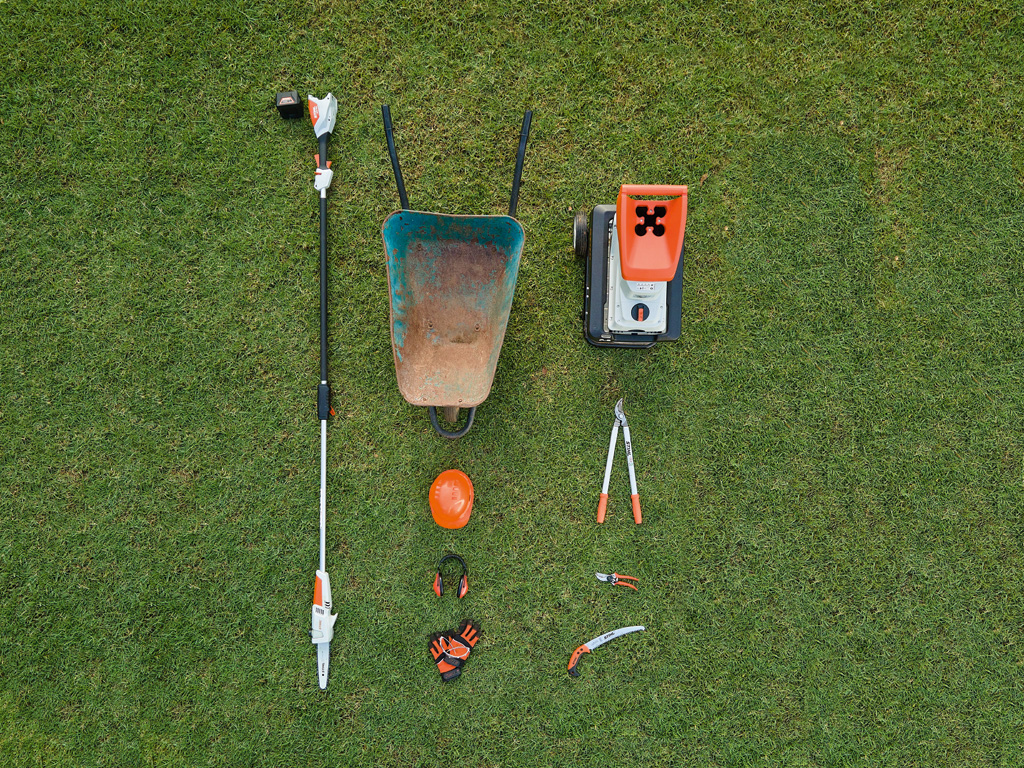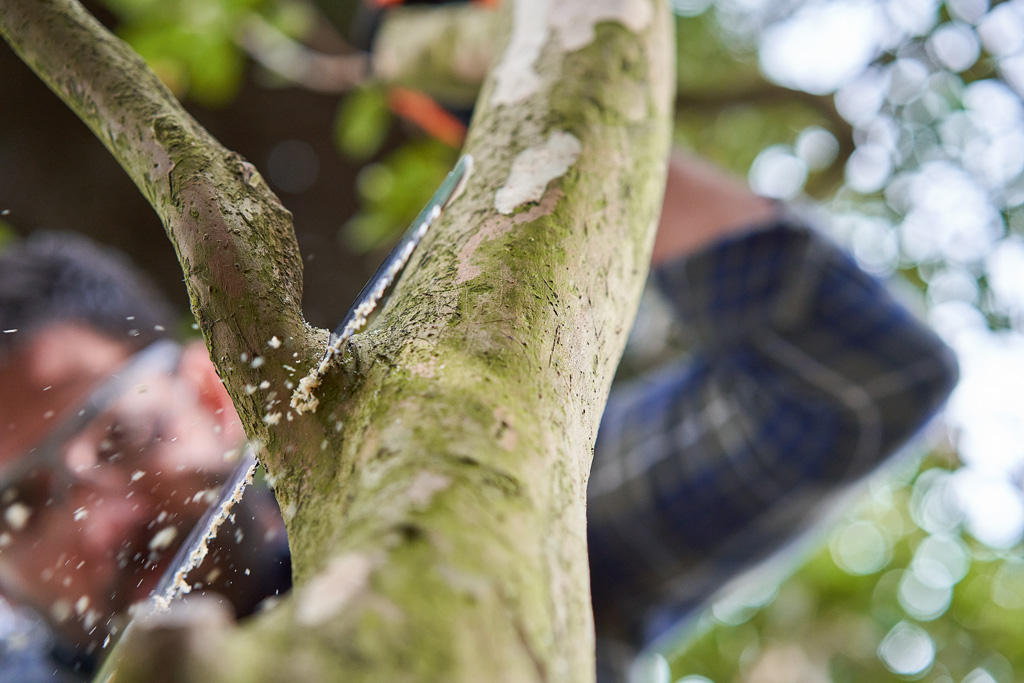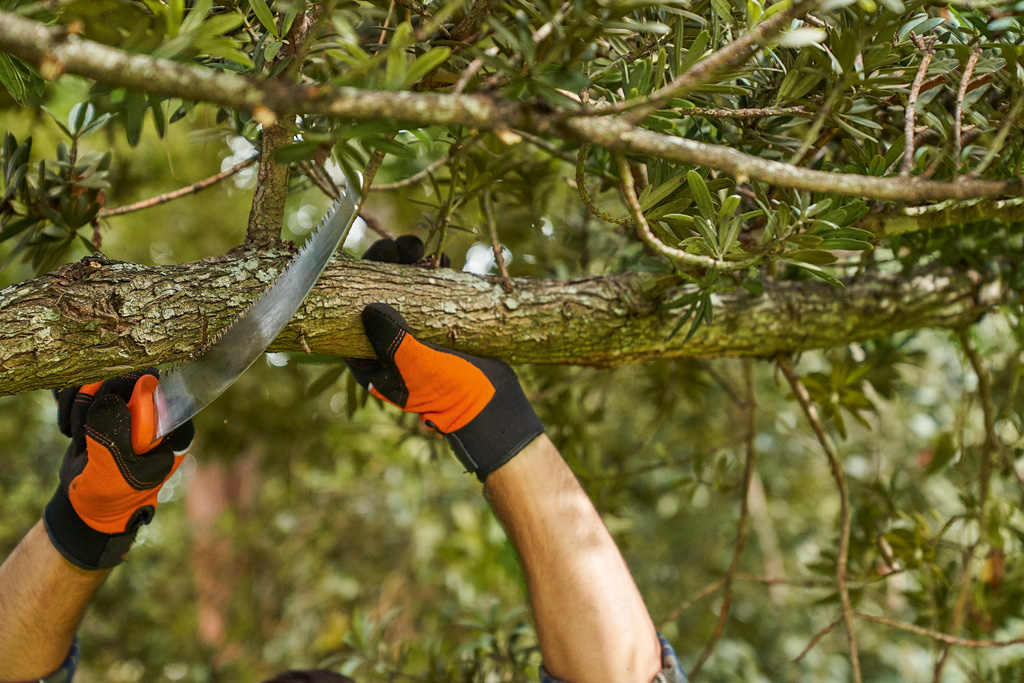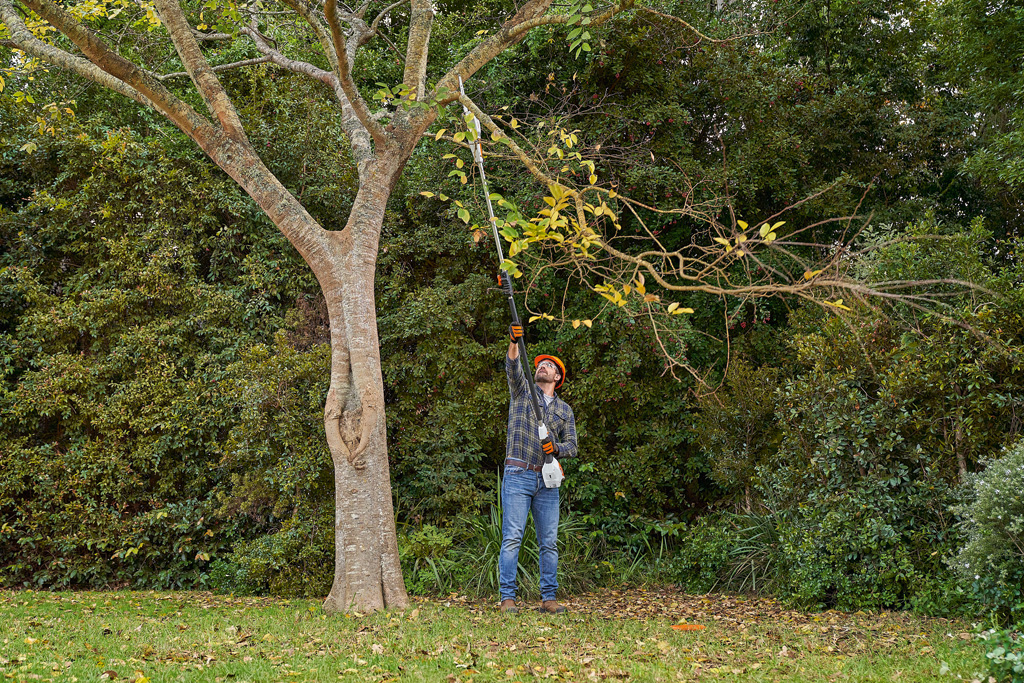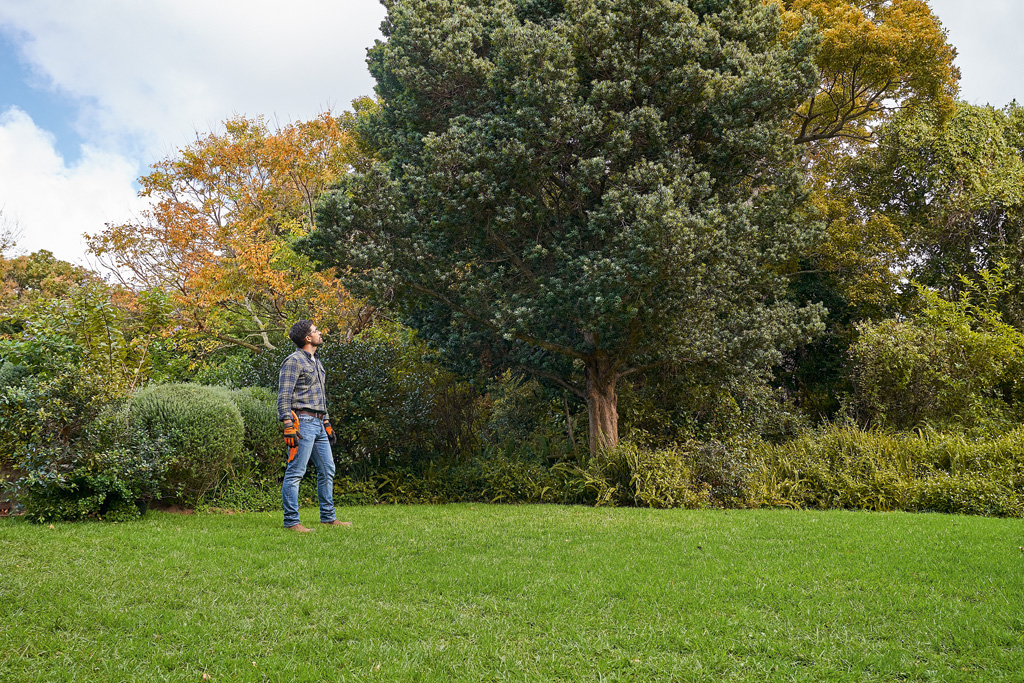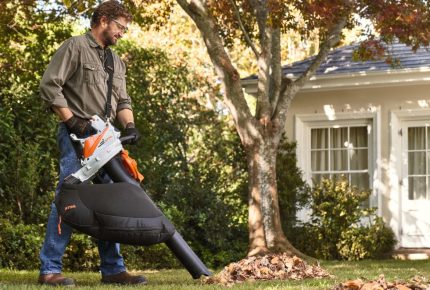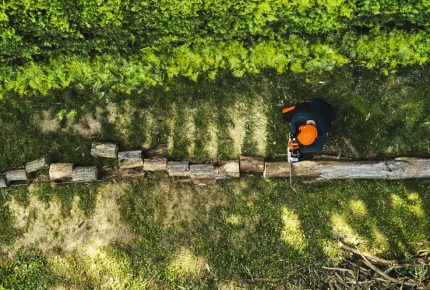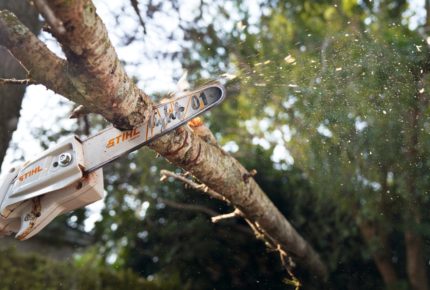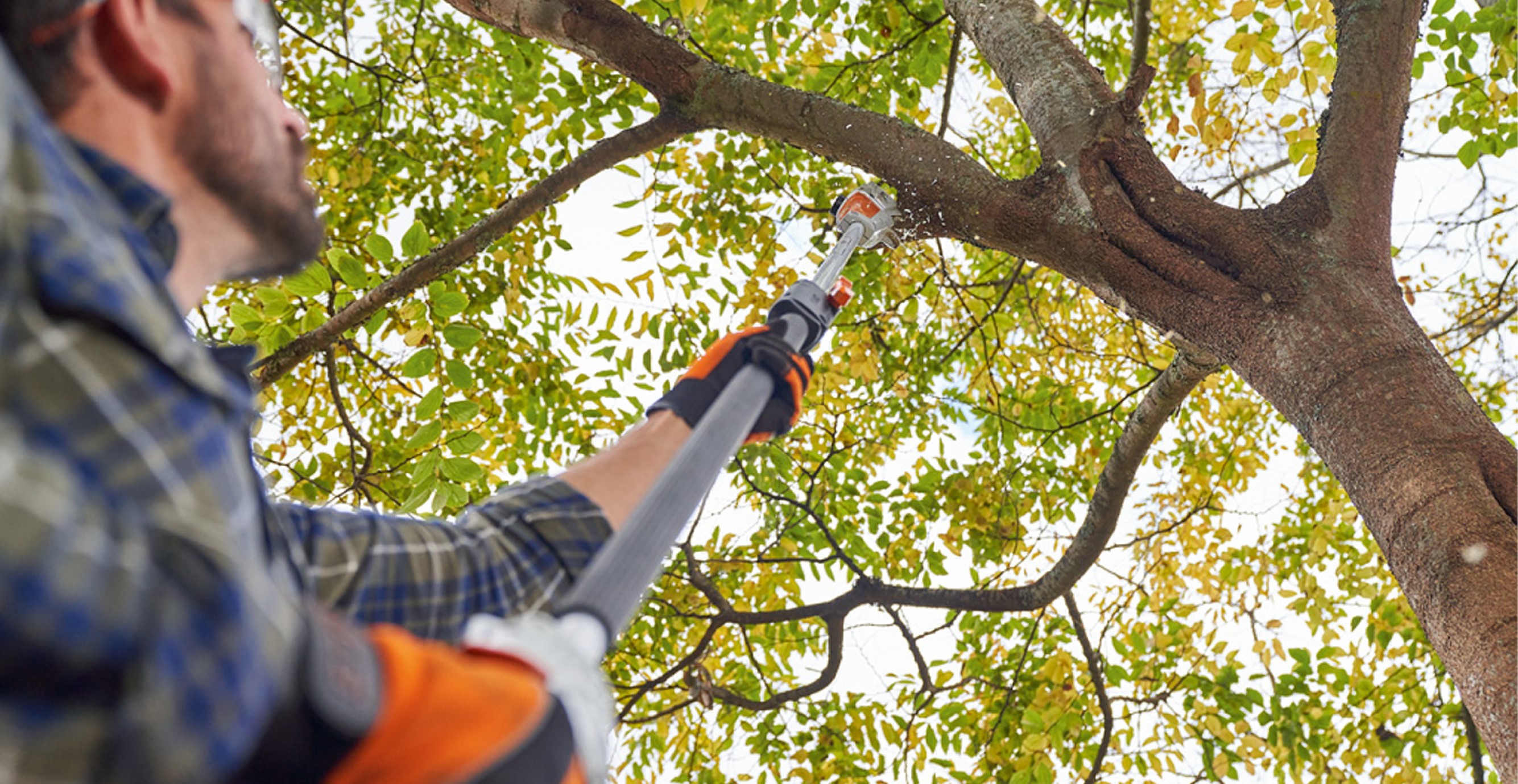
#How To
The Best Techniques for Trimming Trees
For many amateur gardeners, tree trimming is like a closed book – accordingly, it is often neglected. However, a few simple basic trimming rules apply to all trees and can be complied with quite easily by amateur gardeners. The following tips help to trim trees correctly and thus ensure their healthy, lush growth.
Even if trees in the wild get along fine without trimming, it can be worthwhile to intervene in the garden: For example, if the tree top of fully grown trees becomes too dense, too large or too wide, if a tree casts unwanted shadows or branches grow against the home wall or if branches are rotten or dead and threaten to break. However, branches with a diameter of more than 10 centimeters should only be cut off for a very good reason, as this represents a clear interference with the growth of the tree. Also, never remove more than a quarter of a living tree top at a time, as this would weaken the tree.
Tools for the job:
The position and the gauge of the branches to be trimmed determine the tools needed:
- a sharp hand saw like the STIHL PR 27 for cutting thicker branches
- a pair of pruning shears like the STIHL PB 10 for branches up to 3 centimeter thick
- a pair of garden shears like the PG 10, if you want to shorten or trim twigs
- a garden shredder like the STIHL GHE 135 L for shredding long branches
- a pole pruner like the STIHL HTA 66 if you aim high and want
to trim without a ladder at heights of several meters - PPE: Visor or goggles, gloves. A helmet is mandatory when cutting with the HTA
sturdy shoes for secure footing
Hand saws are ideal for tree trimming in the garden – they are handy and sharp enough to work their way effortlessly through thicker branches. Sharp saws leave smooth cut surfaces so that wound care with tree wax is not necessary.
Which branches should be cut off?
- Interfering branches
- Dead or rotten branches that show little foliage, dead twigs, bark cracks, or dense
moss growth - Year-long herbaceous shoots growing vertically from branches – so-called water
shoots - Competing shoots growing parallel to main branches
- Branches crossing and rubbing against each other
- Branches close together in the tree top
Tree trimming: The most important rules
The branch bulge determines the cutting position
Cut branches along the so-called branch bulge: this is the more or less clearly visible bulge or collar at the base of the branch, depending on the species. The branch bulge contains particularly easy-to-separate tissue, whereby smooth interfaces are quickly sealed with new bark. Apply the saw from above and then cut the branch quickly at a slightly oblique angle away from the trunk.
Do not leave coat hooks behind
Remove branches and twigs on the branch bulge completely and do not leave branch stubs behind. These stubs, also known as coat hooks, no longer sprout but dry out and the cut surfaces heal poorly. There is a risk of rot, which in weakened trees can spread into the healthy wood of the trunk. If the stub is too long, the opposite usually happens: the branch sprouts with a wild, thin tangle of twigs and looks like a witches’ broom.
Sawing off thick branches in several steps
Thicker, heavier branches with a diameter of more than 5 centimeters often tear a bark tongue out of the trunk when they fall, causing serious damage to it in some cases. Saw off such a branch gradually from the outside inwards, after first cutting it approximately a third of the way from the bottom, one to two handbreadths from the trunk. Then apply the saw from above and saw through the branch from above until it finally falls off. It doesn’t matter whether you make the cut directly above the first cut or set it a little further out, in either case a torn-out bark tongue will be stopped by the first cut. Saw off the remaining branch stub from top to bottom in one go along the branch bulge. Again, set the saw at a slight angle away from the trunk. To avoid the unwanted tearing out of a branch tongue, you can also saw in the stub again from below if the branch is very thick or if the stub is longer. First cut a very long branch far away from the trunk to make it more manageable. It does not matter if the bark tongue is torn out in the process, as it does not reach all the way to the trunk.
Cutting twigs to the outside bud
If a young tree is to branch, the branches are trimmed above a dormant bud. These are buds that are shaken up by the trimming and stimulated to sprout – namely in the direction in which the last bud behind the cut points. Always place the pruning shears at a slight angle and a few millimeters above the bud. If you cut too close to the bud, the bud will dry out and you will be left with a cone that will also dry out – you will end up with a mini coat hook.
Tree top thinning Whether you use a pair of pruning shears or a saw, the principle is the same: to reduce the size of tree tops, thin them instead of simply shortening them to a desired height. In this case, the branches will sprout like wild witches’ brooms and the tree top will be even denser than before. Therefore, always cut off whole branches directly at the corresponding side branch or, alternatively, above a branching side shoot growing in a suitable direction – gardeners use the technical term “deviating” for this. This branch takes over the function of the cut branch and should be approximately a third as thick as the latter in order to absorb the sap pressure of the cut branch. Thus, the tree top becomes smaller but retains its natural growth form; the sap pressure and thus the growth vigor are distributed more evenly among the remaining branches.
Aiming high with the STIHL HTA 66
With this pole pruner, you can even cut branches several meters high comfortably and safely from the ground. The same trimming rules apply, of course: branch bulge, multi-step cut, cutting in from below and avoiding coat hooks. Important: Never work under a branch – this simple advice is often forgotten in the rush to work. Once you’ve sawn off a branch, clear it out of the way before continuing. It is easy to overlook the branch on the ground when you are looking for a suitable working position, keeping your buds on the branch to be cut.
When to trim trees?
Trimming is generally possible all year round, but summer, autumn or winter are ideal: In summer, cutting wounds heal better, which is a clear advantage with thick branches or with trees like the ornamental cherry, whose wounds are usually slow to heal. In autumn or winter, on the other hand, trees are free of leaves and you can see where to apply the saw or the pruning shears. Therefore, autumn and winter are very popular times for trimming trees. To avoid weakening trees, no major trimming should be done from August until the leaves change color, unless absolutely necessary. In late summer, trees are still drawing vital nutrient reserves into the trunk and roots from the leaves, which they need for new shoots in the spring: For this reason, by the way, the foliage changes color in autumn. Branches with a diameter of more than 10 centimeters are only cut off in an emergency case, as it weakens the tree too much. If not only the trimming of smaller ornamental trees, but also that of older trees is pending, you should ask the authority in charge whether a permit is necessary and at what times trimming is permitted. The regulations vary across the country.

